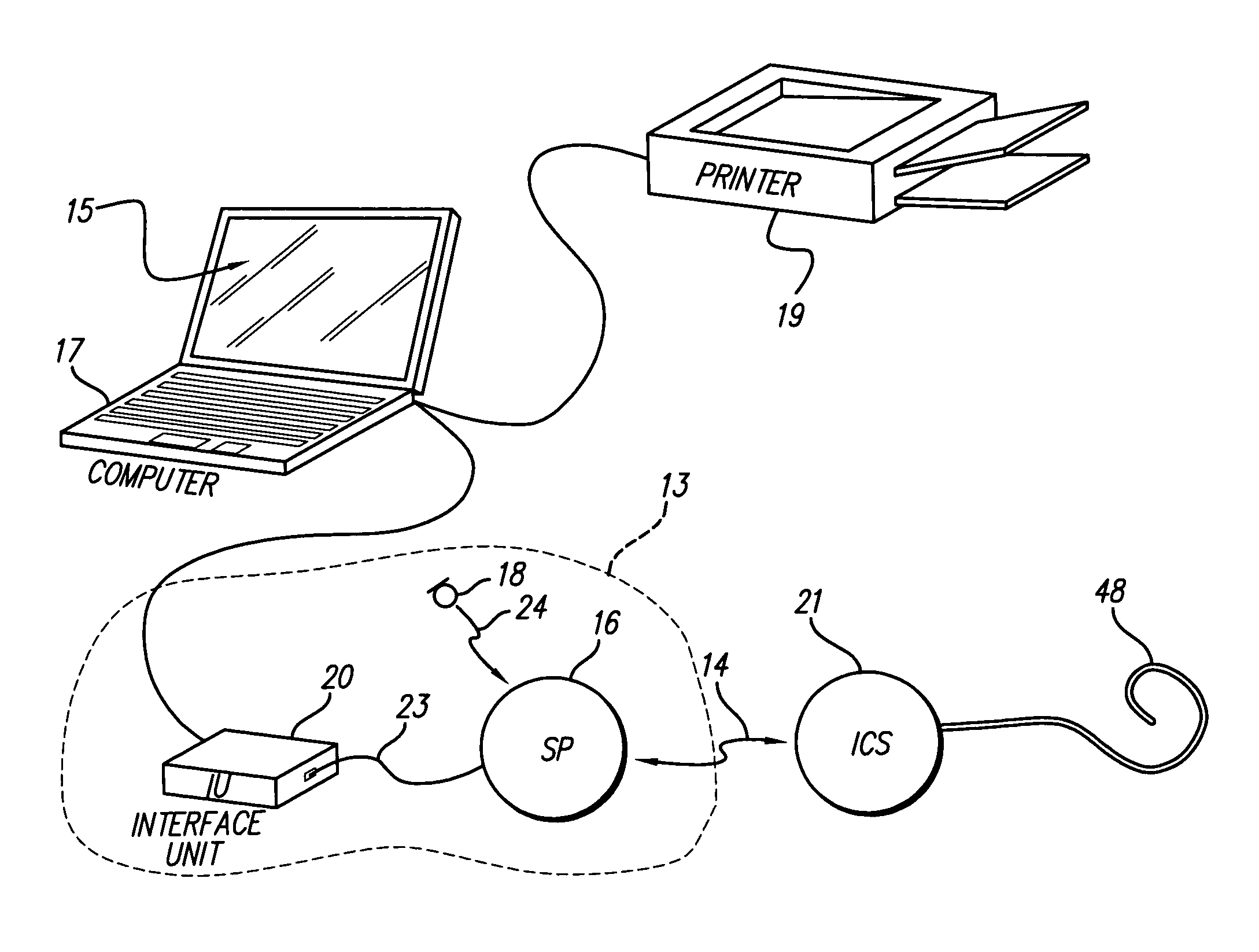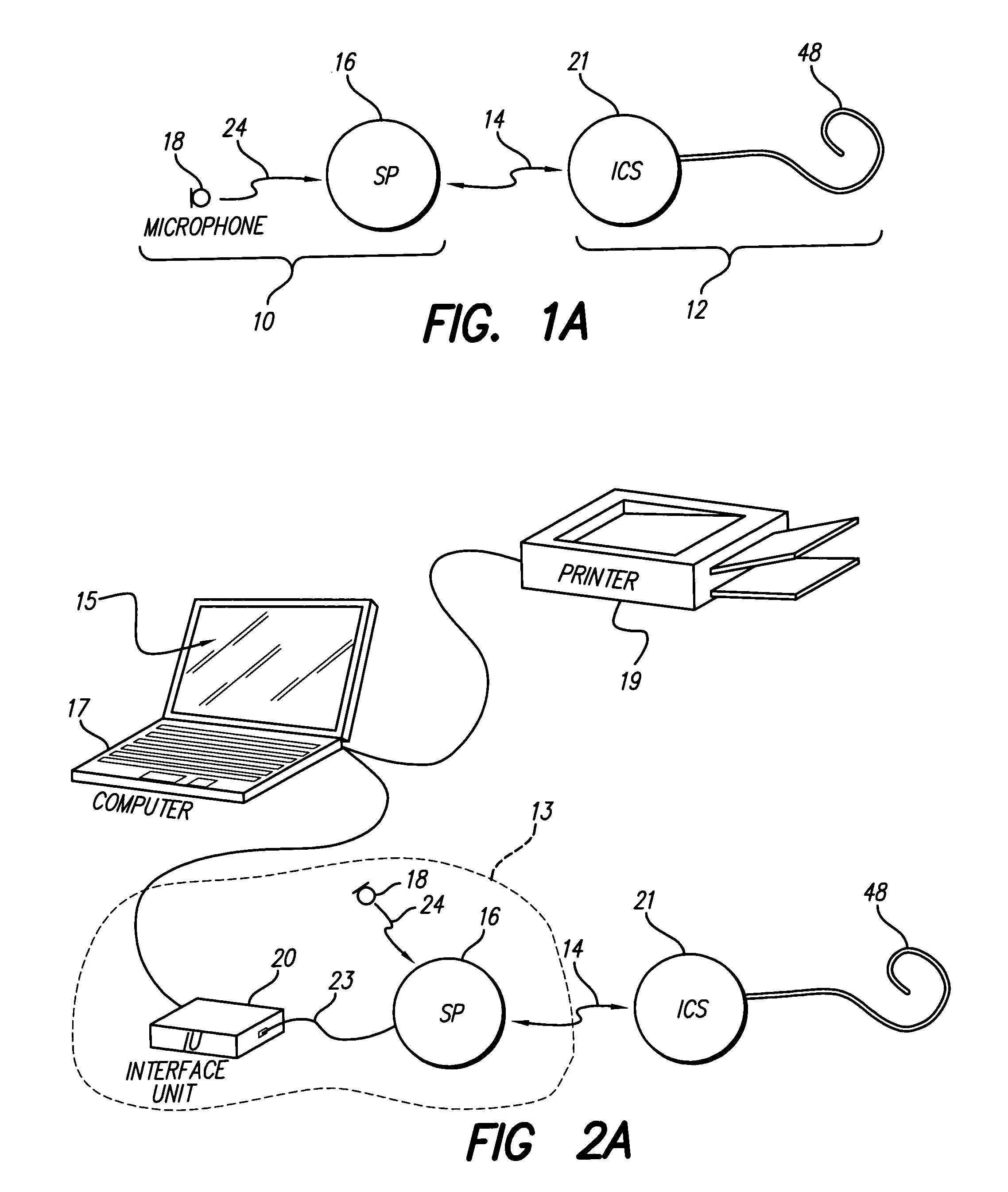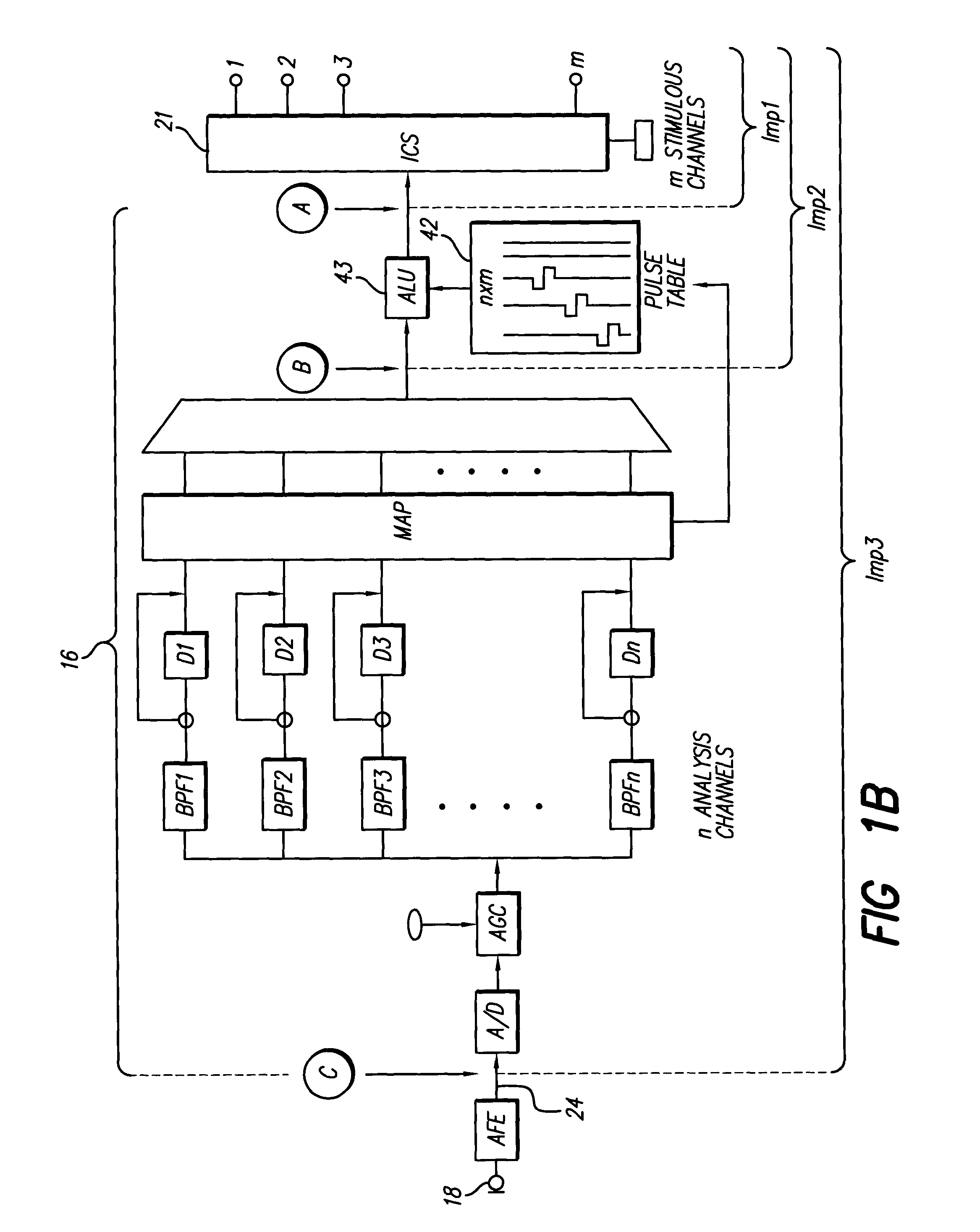Enhanced methods for determining iso-loudness contours for fitting cochlear implant sound processors
a cochlear implant and contour technology, applied in the field of cochlear implants, can solve the problems of increasing complexity the inability to fully control and customize the operation of the cochlear implant, and the implanted portion of the cochlear stimulation system, etc., to achieve the effect of high stimulation rate and simplified cochlear implant fitting process
- Summary
- Abstract
- Description
- Claims
- Application Information
AI Technical Summary
Benefits of technology
Problems solved by technology
Method used
Image
Examples
Embodiment Construction
[0030]The following description is of the best mode presently contemplated for carrying out the invention. This description is not to be taken in a limiting sense, but is made merely for the purpose of describing the general principles of the invention.
[0031]At the outset, it is noted that, while the following describes the invention mainly in terms of the Clarion®, CII Bionic Ear®, and HiRes90K® cochlear implant systems, which cochlear implant systems are commercially available from Advanced Bionics® Corporation of Sylmar, Calif., the invention is not so limited. Rather, any multichannel cochlear implant system may benefit from the present invention. The CLARION®, CII Bionic Ear®, and HiRes90K® systems are referenced and described herein as examples of how the best mode of the invention may be implemented. As the CLARION®, CII Bionic Ear®, and HiRes90K® systems are not the subject of the invention, per se, many of the details associated with the CLARION®, CII Bionic Ear®, and HiRes...
PUM
 Login to View More
Login to View More Abstract
Description
Claims
Application Information
 Login to View More
Login to View More - R&D
- Intellectual Property
- Life Sciences
- Materials
- Tech Scout
- Unparalleled Data Quality
- Higher Quality Content
- 60% Fewer Hallucinations
Browse by: Latest US Patents, China's latest patents, Technical Efficacy Thesaurus, Application Domain, Technology Topic, Popular Technical Reports.
© 2025 PatSnap. All rights reserved.Legal|Privacy policy|Modern Slavery Act Transparency Statement|Sitemap|About US| Contact US: help@patsnap.com



